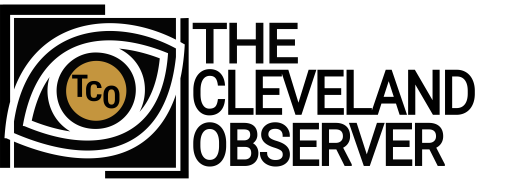|
|
By Kellie Morris
Stroke is treatable and preventable was the message to the Cleveland community from The American Heart and Stroke Association on May 6, 2022. A virtual program titled Power to End Stroke: Reclaim our Rhythm & Soul was held to kick off Stroke Awareness Month. Stroke is still the leading cause of disability and among the top 5 leading causes of death in America.
The Cuyahoga Metropolitan Housing Authority Choir opened the program with a rendition of “Miracle” by The Clark Sisters. The inspirational song was followed by educational facts, stroke care advancements, and preventative information shared by practitioners from the Cleveland Clinic. The program also offered viewers the opportunity to put the information learned into practice through a line dance demonstration, breakout sessions, and more music from Black Violin!
 Dr. Abbas Kharol explained that there are two types of strokes. Ischemic or blood clots account for approximately 85% of all strokes. The other 15% are caused by bleeding on the brain or hemorrhagic. He emphasized the critical TIME factor or “Golden Hour of Stroke Care” in acute ischemic strokes. Ideally, the person would be evaluated and begin treatment within an hour of the event beginning. To accomplish this goal, one must first recognize that the stroke is occurring.
Dr. Abbas Kharol explained that there are two types of strokes. Ischemic or blood clots account for approximately 85% of all strokes. The other 15% are caused by bleeding on the brain or hemorrhagic. He emphasized the critical TIME factor or “Golden Hour of Stroke Care” in acute ischemic strokes. Ideally, the person would be evaluated and begin treatment within an hour of the event beginning. To accomplish this goal, one must first recognize that the stroke is occurring.
A testimonial was shared from an African American female who was 34 when she experienced having a stroke. She shared that she took over-the-counter medication to relieve the headache. She had decided to go home and go to bed. Luckily, she worked in a medical environment and her co-workers recognized her jumbled words and slurred speech as a sign of Stroke! F.A.S.T. is the acronym used to educate on the signs of stroke. Face, Arm, Speech, and Time are key factors in stroke awareness.
Dr. Gwendolyn F. Lynch shared the advancements in stroke care. She stated, “More people are surviving and thriving than decades ago.” She also said that the increased availability of diagnostic units that are smaller and portable represents great progress in critical care. She explained the importance of having the ability to monitor the heart, lungs, and brain in neurological critical care. Lynch told viewers how they have learned, that “the body heals better with mobility.” She stated that therapies are now being implemented to get patients moving early in their recovery.
“Stroke is 80% preventable,” said Dr. Shazam Hussain. He shared the factors that contribute to cardiovascular disease. High Blood Pressure, High Cholesterol, Diabetes, Smoking, Physical Inactivity, and Diet, specifically sodium intake, are among the risk factors. He identified high blood pressure as a major culprit in the causes of stroke stating, “If we could manage high blood pressure, we could eliminate half the strokes in the country.” He encouraged the monitoring of one’s blood pressure at home. Hussain stated that with the advancements in stroke care today, an ideal post-stroke recovery time is 90 days to a year.
Diabetes, Smoking, Physical Inactivity, and Diet, specifically sodium intake, are among the risk factors. He identified high blood pressure as a major culprit in the causes of stroke stating, “If we could manage high blood pressure, we could eliminate half the strokes in the country.” He encouraged the monitoring of one’s blood pressure at home. Hussain stated that with the advancements in stroke care today, an ideal post-stroke recovery time is 90 days to a year.
Dr. Oge Ezimaker, a psychiatrist with MetroHealth, concluded the medical presentations by establishing the link between mental and physical health. She stated that physical activity may improve mental health, but mental health can deter one from physical activity. She encouraged the use of music as a tool to improve mood. The program concluded with movement and music. Barry White told us, “Practice what you preach!”




